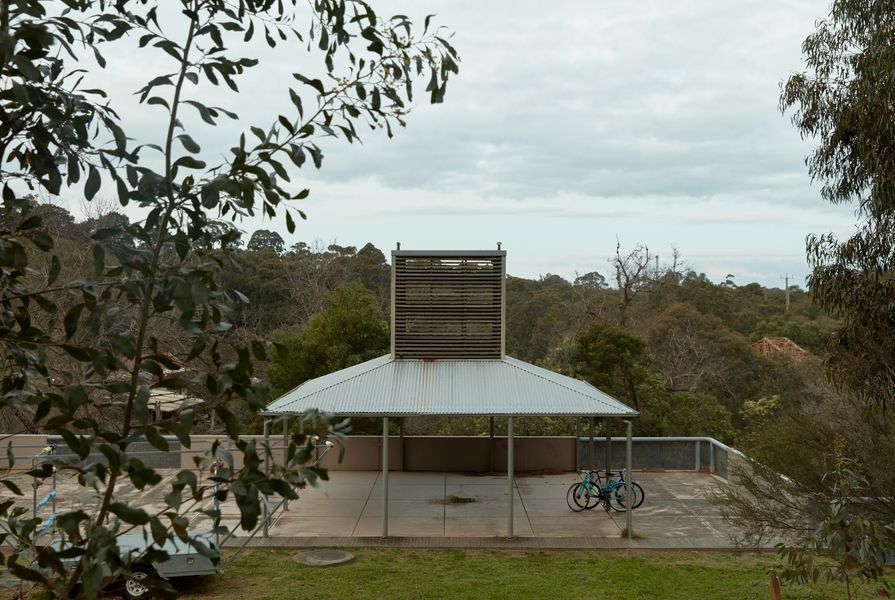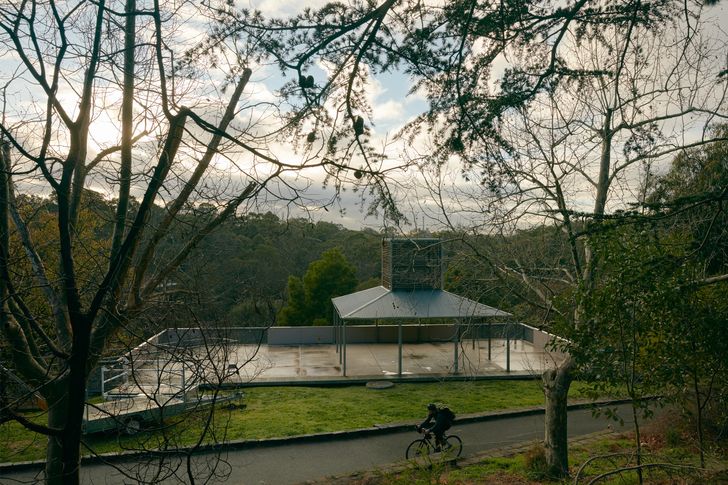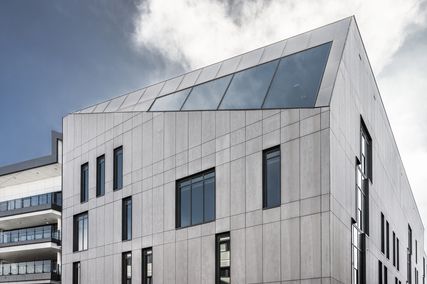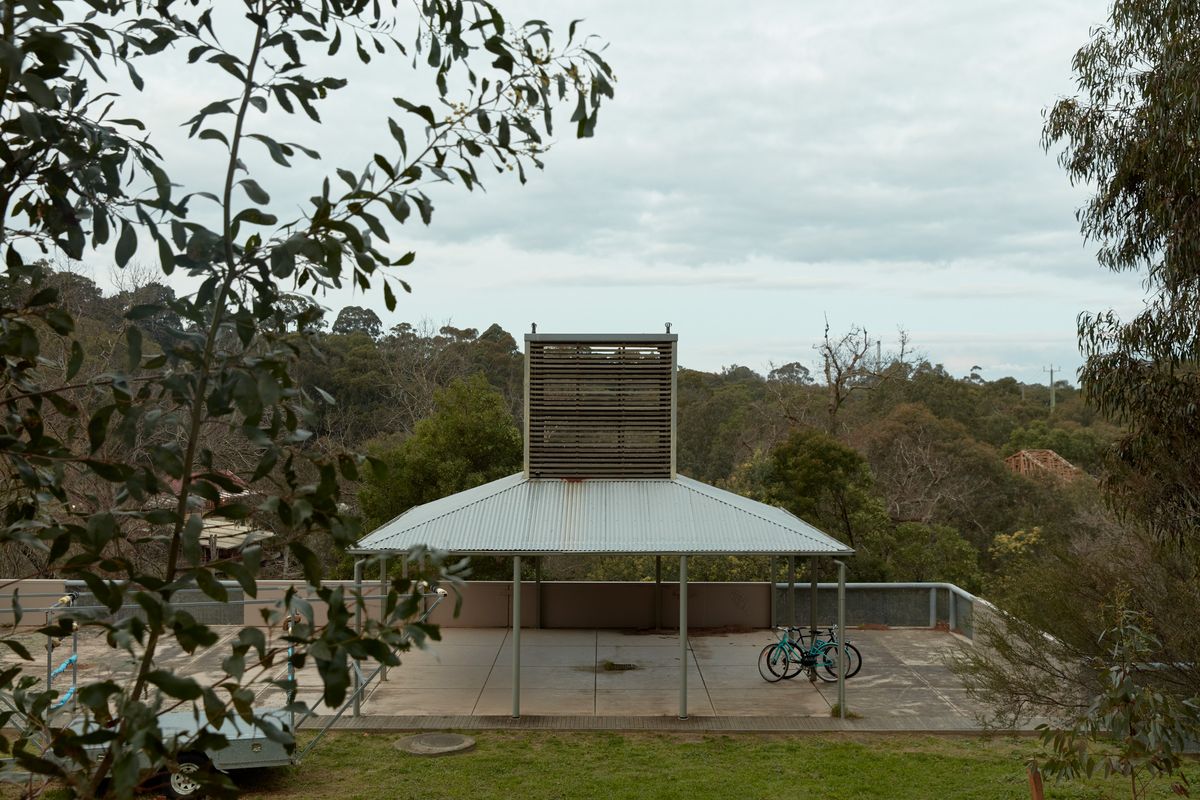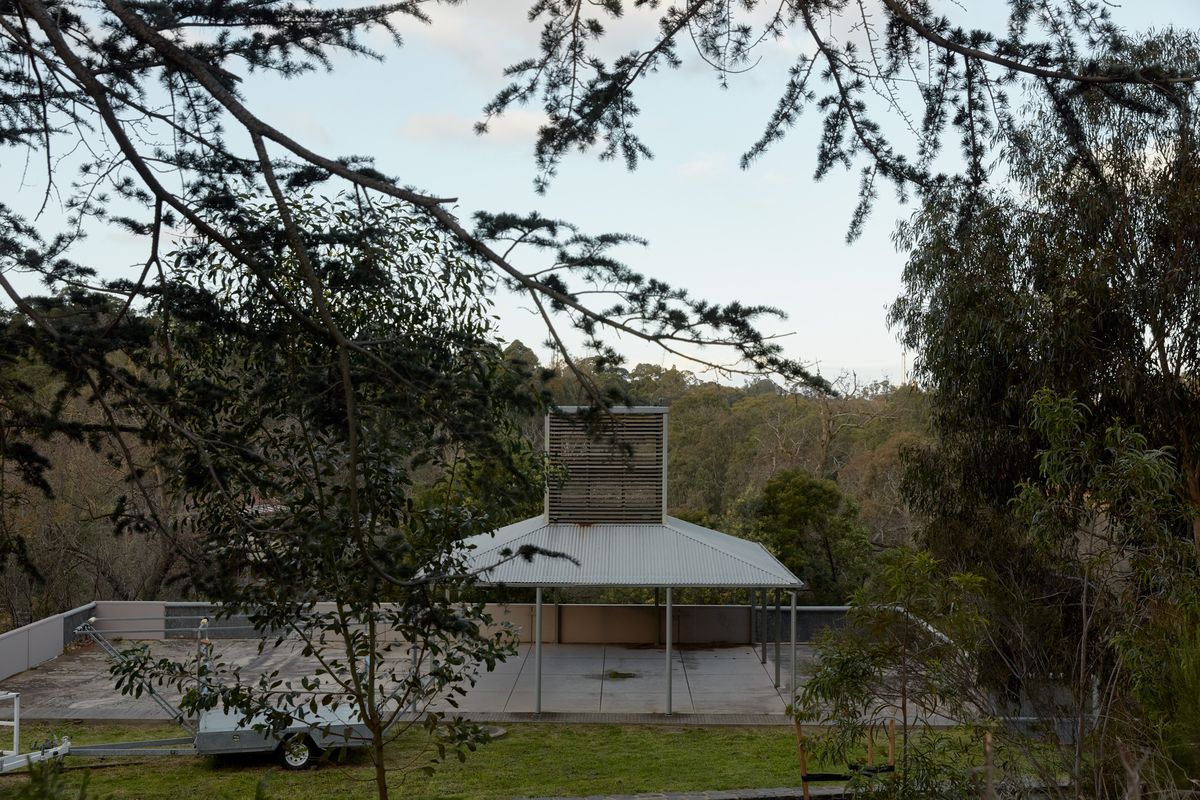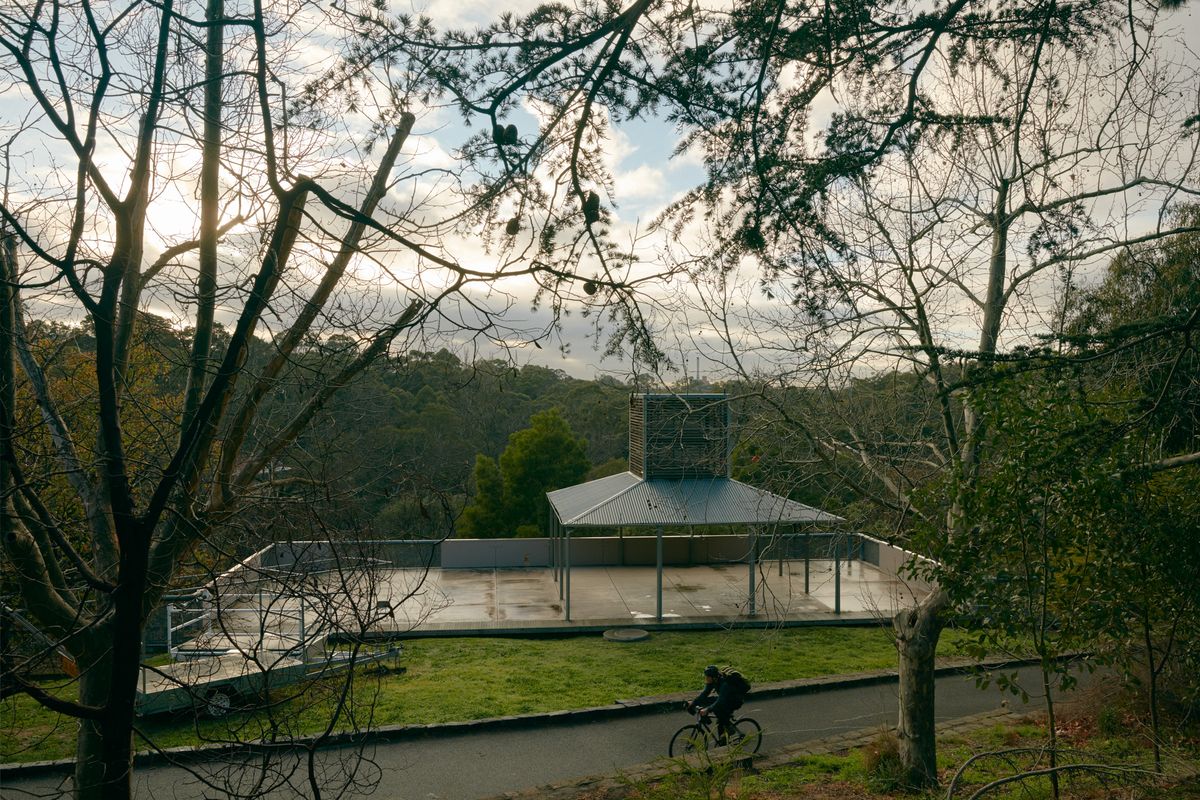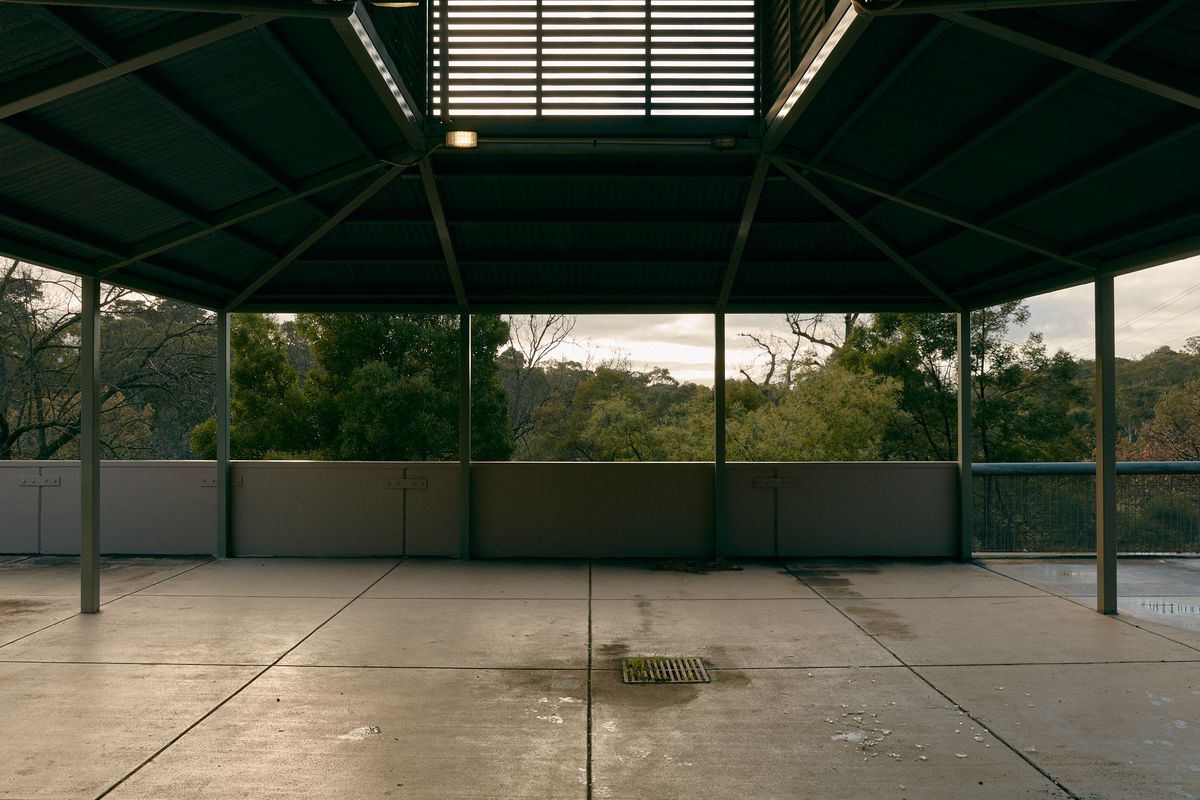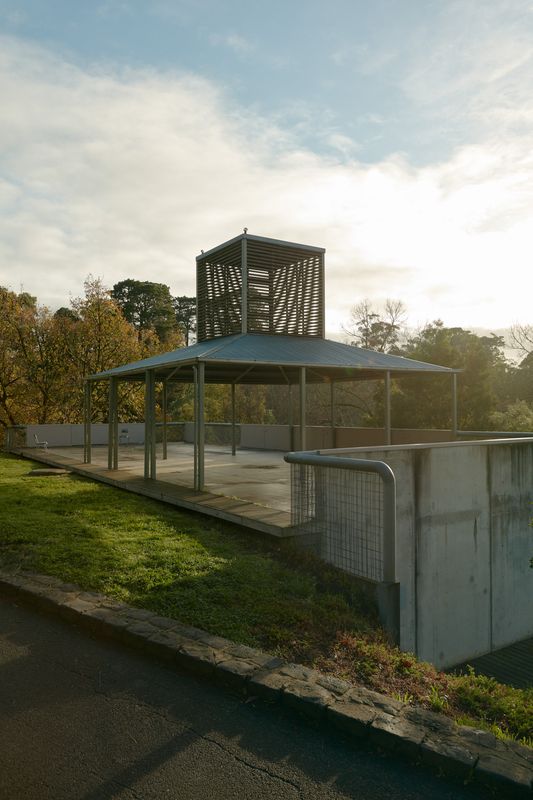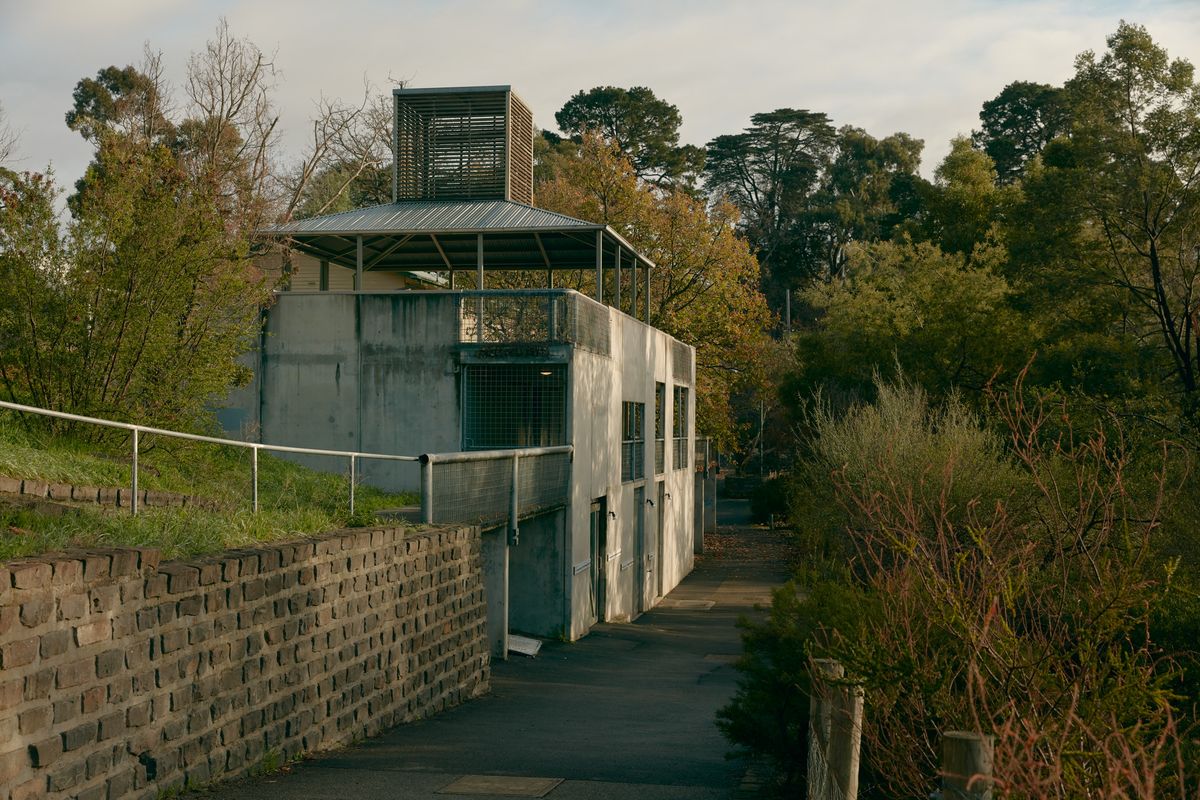A modernist pavilion in a Melbourne park is facing partial demolition by the local council.
Architecture practice Kennedy Nolan is petitioning the council and its councillors to halt the demolition and reconsider its decision.
The structure, known as the Riverside Pavilion, consists of a double-storey building designed by Carter Couch in the 1980s. It has a pyramid-shaped roof with a tall, ventilating chimney.
In October 2019, the council made the decision to demolish part of the structure in order to make way for a storage shed for the neighbouring Ivanhoe Northcote Canoe Club, despite receiving nine objections to the demolition plan.
One objection was from University of Melbourne chair of architecture professor Philip Goad. In his submission to the council Goad said that the pavilion is a “rare, non-residential work by the highly regarded Paul Couch [and an example of his] long-held interest in tilt-slab precast concrete panel construction system that is often a defining feature of his better-known residential works.”
“Couch has been a pioneer in using tilt-slab concrete panels in small-scale settings,” he continued.
“In my opinion there is definitely a case for, at the very least, listing the pavilion structure and workshop/change rooms together with the bluestone amphitheatre as being of local heritage.
“I also believe that with further investigation there could be a possible case for considering the entire complex and its site as being of even greater significance.”
Riverside Pavilion by Carter Couch.
Image: Tom Ross
A council heritage advisor agreed with Goad and told a senior statutory planner, “The existing bluestone amphitheatre and adjacent pavilion structure and workshop/change rooms have iconic, longstanding (and currently active) connections with the diverse recreational uses of the park along the Yarra. There is strong evidence that the bluestone amphitheatre and adjacent pavilion structure and workshop/change rooms have contributory social significance in and of themselves, as well as being related objects that contribute to the cultural significance of the place.
“Furthermore, research produced by professor Philip Goad and architects Kennedy Nolan in response to this application have demonstrated the potential of the structures (both amphitheatre, change rooms and barbecue area) to have both local and state level architectural significance in and of themselves.
“It is strongly recommended that the application to demolish the barbecue shelter be refused.”
The pavilion is located in Fairfield Park, which itself is listed on the Victorian Heritage Register, however the statement of significance does not mention the pavilion. Its heritage significance is defined by Edwardian-era structures and plantings.
“Yarra City Council should consider nominating Fairfield Park for inclusion on the Victorian Heritage Register with the bluestone amphitheatre and adjacent pavilion structure and workshop/change rooms listed as important contributory or related objects,” the heritage advisor said.
However, a second heritage advisor told the council, “From the photos I have been provided it is clear that the subject shed is a pre-fabricated galvanised shed, of unknown age but possibly dating from the 1960s/70s.
“The shed certainly has no architectural significance and it is highly unlikely to be of any historical significance for its age or associations.”
After the council’s decision to proceed with the demolition, Nolan and others took the matter to the Victorian Civil and Administrative Tribunal, which found in favour of the council.
“The Council submitted that the demolition of the post-war gazebo structure is of no consequence from a heritage perspective,” VCAT senior member Bill Sibonis said in handing down the tribunal’s decision.
“A key consideration is that the structures to be demolished are not identified as contributory to the heritage precinct. Whether this is a correct designation is not a matter for the Tribunal. I must take the planning scheme as I find it.
“The demolition of the structures would not be inconsistent with heritage policy, which only seeks the retention of significant and contributory buildings. Based on the Heritage Review and the Statement of Significance, the structures do not contribute to the significance of the heritage place. Accordingly, their loss would not represent an unacceptable outcome from a heritage perspective.”
Kennedy Nolan had prepared an alternative scheme that would retain pavilion and also provide additional storage spaces for the canoe club. However, “The Council have made no comments about our proposal – we [had] to pressure them to even acknowledge the receipt of the documents,” Rachel Nolan told ArchitectureAU.
The pavilion has been nominated for state heritage listing. Heritage Victoria will consider the nomination on 21 September.
At the time of publication, the petition has attracted more than 2,000 signatures.

